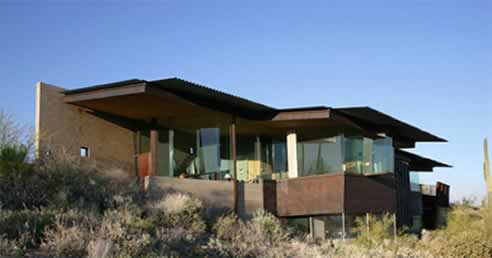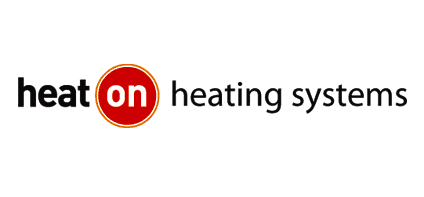Heat-On heating panels by Heat On Systems 
Heat-On panels have an emitting efficiency of more than 94.8%, due to highly efficient far-infrared wave technology. Why are other heating systems unable to do this?
In slab/under floor heating:
Produce heat from the ground up. Making the floor considerably warmer as appose to 1.5 - 2.0meters above the floor (which can be as much as 8C in difference). The greatest advantage with Heat-On panels when compared to this system is; as the panels are installed on the ceiling they are able to emit their added benefits such as (improved blood circulation, stabilizes nerves, 73% deodorization effects, purifying air properties, kills bacteria with 99.9% sterilization). Reverse cycle/split systems:
Produce hot air through an E.H.P (Electronic Heat Pump) that simply blows hot air. These systems have only around a 50% emitting efficiency, this also tends to decrease as temperatures decrease over the winter months as the units are remotely installed outside. Disadvantages; circulation of dust and bacteria, up to 10 degrees C difference in temperatures (hot head, cold feet), filters/maintenance. Ducted gas heating:
Again this system relies by ducting/blowing hot air into a given room/area via either ceiling installed vents (most in-efficient) or floor mounted vents. Disadvantages; again circulation of dust and bacteria, up to 10 degrees C difference in temperatures (hot head, cold feet) filters/maintenance. Hydronic heating:
Circulates hot-water from a gas-powered boiler (or electric) throughout a home/building via wall mounted radiator panels which work on natural convection (without fan forcing). Disadvantages; maintenance on the boilers, radiators can be hot to touch (dangerous to infants) & obtrusive/sacrifice space, up to 8 degrees C difference in temperatures.
|




 Heat Recovery Ventilation Systems from
Heat Recovery Ventilation Systems from FAR Infrared Heating Panels from Heat-On
FAR Infrared Heating Panels from Heat-On Energy Efficient Heating & Cooling
Energy Efficient Heating & Cooling Energy Efficient Radiant Heating Panels
Energy Efficient Radiant Heating Panels Smart Wall & Ceiling Heating Panels from
Smart Wall & Ceiling Heating Panels from Energy Efficient Wall Panel Heaters |
Energy Efficient Wall Panel Heaters | Slim Line Bathroom Heaters | Heat-On
Slim Line Bathroom Heaters | Heat-On Heat-On Yoga Panel Far Infrared Heaters
Heat-On Yoga Panel Far Infrared Heaters Heritage Listed Building Heating
Heritage Listed Building Heating Efficient Warehouse Heating Solution
Efficient Warehouse Heating Solution Slimline Ceiling Panel Heaters | Heat-On
Slimline Ceiling Panel Heaters | Heat-On Heat Panel FIR Infrared Heating |
Heat Panel FIR Infrared Heating | Yoga Panel Heaters | Heat-On Systems
Yoga Panel Heaters | Heat-On Systems Efficient Church Heating with FIR |
Efficient Church Heating with FIR | Heat-On Energy Efficient Ceiling Panel
Heat-On Energy Efficient Ceiling Panel DIY FIR Wall Panel Heaters | Heat-On
DIY FIR Wall Panel Heaters | Heat-On Efficient Far Infrared Heaters for Yoga
Efficient Far Infrared Heaters for Yoga Radiant ceiling heating from Heat On
Radiant ceiling heating from Heat On Solar PV Heating Integration from Heat
Solar PV Heating Integration from Heat Radiant FIR Heating Panels Melbourne
Radiant FIR Heating Panels Melbourne
